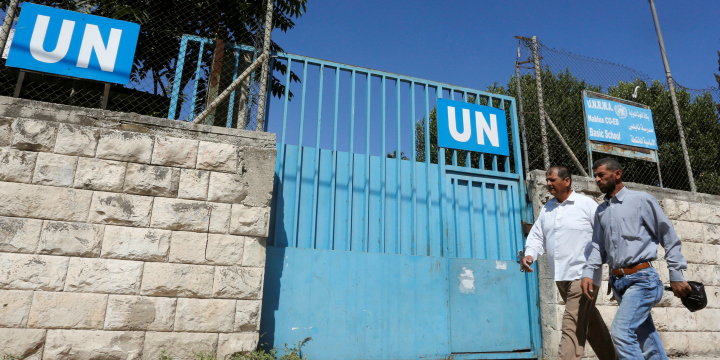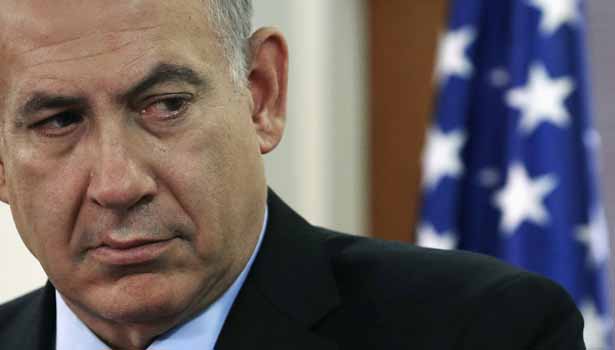I am a scholar of Near Eastern Studies, holding a Ph.D. degree in this field from Princeton University. Professionally, I am a journalist who worked for 42 years at Israel’s Arabic radio station in various posts. Since 2000, I have been researching the attitude to the “other” and to peace in Middle Eastern schoolbooks and have authored several studies on this issue.[1] In the recent years I have been focusing on schoolbooks of the Palestinian Authority (PA).
The PA started issuing its own schoolbooks in 2000 (save for few experimental textbooks it published earlier). I reviewed these books as well and authored several studies.[2] In the years 2016-2018 the PA issued new textbooks that have replaced their predecessors. I checked these books too and authored three studies dealing with them.[3] The PA issued textbooks are used in all schools, including UNRWA’s, in the West Bank, the Gaza Strip and most schools of East Jerusalem.
As regards the research methodology, all relevant references to the issue appearing in the books were carefully gathered and placed as quotations within the study’s various thematic chapters. The gathered material included all forms of written text – didactic texts, stories, poems, questions and assignments, language exercises, footnotes, etc. It also included non-textual material such as photographs, illustrations, maps, charts and graphs. Every reference, be it “positive”, “negative” or “neutral”, was given equal attention and was inserted in the report as is, with no additional discussion, save for short explanatory remarks whenever necessary. The analytical picture was given in the conclusion part of each study on the basis of the gathered and categorized material, including the clarification of its meanings and implications as far as the future of the conflict was concerned. The principles appearing in UNESCO’s documents regarding the attitude to the “other” and to peace (see in the Appendix at the end of this paper) served as criteria for evaluation of the studied material.
Findings of former studies, in which schoolbooks of various countries were examined, made it possible to make comparative analysis which brought about the crystallization of comprehensive research criteria and also enabled to trace relevant material missing from the books.
It should be emphasized that the research material did not include religious texts. Nor did it include messages of Palestinian patriotism or those related to Palestinian, Arab and Muslim identity outside the context of the conflict (for example: love of the homeland, attachment to Jerusalem, references to the country in its entirety as “Palestine” in historical and geographical contexts – but not politically, expressions of pride in Palestinian cultural heritage, Islamic religious polemics against “infidels” in general, etc.).
The study of the attitude to the Jewish-Israeli “other” and to peace in the PA schoolbooks – which are the same books used in grades 1-10 in UNRWA schools – reveals the following characteristics:
- De-legitimization of both the existence of the State of Israel and the Jews’ very presence in the country. Israel does not appear on the map and is replaced by Palestine as the sovereign state in the region. The Jews are presented as colonialist settlers and their cities – including Tel Aviv – do not appear on the map as well. The Jews’ holy places in the country are not recognized as such but rather presented as Muslim holy places usurped by the Jews (the Wailing Wall in Jerusalem, the Cave of the Patriarchs in Hebron and Rachel’s Tomb in Bethlehem).
The new Palestinian schoolbooks that were published in 2017-2018 have worsened their attitude in this regard, as they omit the name “Israel” altogether and replace it with the expression “Zionist Occupation” in the vast majority of the texts mentioning it. They also feature a total denial of any Jewish history in the country and describe the numerous archaeological relics attesting to it as “fake”.
- Massive demonization of both Israel and the Jews, with the latter being presented as enemies of Islam since its very beginning. Israel is depicted as an all-evil entity with exclusive responsibility for the conflict while the Palestinians are portrayed as the ultimate victim. No objective information is given in the books about Israel and the Jews that would balance this horrible picture even slightly. Nor is there any reference in the books to the Jewish-Israeli individual as an ordinary human being. Rather, they are dealt with as a group, with the accompanying connotations of alienation and existential threat to the Palestinians.
- Absence of education for peace and coexistence with Israel. Instead, the books feature a call for a violent struggle for “the liberation of Palestine”, including Israel’s pre-1967 territories which are considered Palestinian territories occupied in 1948. Religious elements, such as Jihad, martyrdom (shahadah) and the call for the liberation of Al-Aqsa Mosque in Jerusalem are added to this struggle, thus transforming it from a national struggle into a religious holy war against “the Devil’s aides” – with all the grave implications on the chances to solve the conflict peacefully.
The new textbooks of 2017-18 intensify their tone in this respect, hinting that the Jews in the country will be exterminated after its liberation. The books also stress the role of terrorist actions in the framework of the violent liberation struggle and mention in this context the attack on the civilian bus on Israel’s Coastal Highway in 1978, in which over 30 persons were murdered, and the massacre of the Israeli sportsmen at the Munich Olympic Games in 1972. The new books also emphasize that the return of the descendants of the 1948 refugees will take place not to Israel, but to liberated Palestine.
Appendix:
UNESCO Principles of Education for Peace and Tolerance
- Does the curriculum promote tolerance, understanding and respect of the “other”, its culture, achievements, values and way of life?[4]
- Does the curriculum develop capabilities for non-violent conflict resolution?[5]
- Does the curriculum promote peace?[6]
- Does the curriculum promote international understanding and cooperation? Does it motivate the student to understand and bear responsibility for the keeping of peace?[7]
- Is the curriculum free of wording, imagery and ideologies likely to create prejudices, misconceptions, stereotypes, misunderstandings, mistrust, racial hatred, religious bigotry and national hatred, as well as any other form of hatred or contempt for other groups or peoples?[8]
- Is all the educational material (textbooks, workbooks, teachers’ guides, maps, illustrations, instructional aids) up-to-date, accurate, balanced and unprejudiced? Does it use equal standards to promote mutual knowledge and understanding between different peoples?[9]
- Does the curriculum include objective, complete and up-to-date data, as well as critical analysis of the historical and contemporary factors at the root of the differences, conflicts and tensions between states and groups, as well as ways to overcoming those differences?[10]
[1] Peace and the “Other” in Syrian School Textbooks (2001); The West, Christians and Jews in Saudi Arabian Schoolbooks (2003); Jews, Christians, War and Peace in Egyptian School Textbooks (2004); The War Curriculum in Iranian Schoolbooks (2007); Peace and the “Other” in Tunisian Schoolbooks (2009). All these studies were published by the Institute for Monitoring Peace and Cultural Tolerance in School Education (IMPACT-SE, formerly the Center for Monitoring the Impact of Peace – CMIP) and are to be found on its site.
[2] Jews, Israel and Peace in Palestinian School Textbooks (2001); Jews, Israel and Peace in the Palestinian Authority Textbooks and High School Final Examinations – Complementary Report (2002); Jews, Israel and Peace in the Palestinian Authority Textbooks – The New Textbooks for Grades 3 and 8 (2003); Jews, Israel and Peace in the Palestinian Authority Textbooks – The New Textbooks for Grades 4 and 9 (2004); Jews, Israel and Peace in the Palestinian Authority Textbooks – The New Textbooks for Grades 5 and 10 (2005); Jews, Israel, the West and Peace in Palestinian Authority Textbooks for Grades 11, 12 and Muslim Schools in the West Bank (Draft, 2007); Palestinian Textbooks: From Arafat to Abbas and Hamas (2008). These studies too were published by the said Institute and are found on its site.
[3] Schoolbooks of the Palestinian Authority (PA): The Attitude to the Jews, to Israel and to Peace (December 2017); Palestinian Authority Textbooks: The Attitude to Jews, Israel and Peace (Update, June 2018); The Attitude to Jews, Israel and Peace in the 2017/18 Palestinian Authority Schoolbooks for Grades 11 and 12: A Complementary Study (October 2018). All these studies were published by the Meir Amit Intelligence and Terrorism Information Center and are found on its site.
[4] Based on the “Declaration of Principles on Tolerance”, proclaimed and signed by member states of UNESCO on November 16, 1995, Article 1, 4.2.
[5] Based on the “Integrated Framework for Action on Education for Peace, Human Rights and Democracy”, approved by the General Conference of UNESCO at its twenty-eighth session, Paris, November 1995, Article 9, and on the afore-mentioned “Declaration of Principles on Tolerance”, Article 5.
[6] Ibid. Article 6.
[7] Based on “UNESCO Recommendations concerning Education for International Understanding, Cooperation and Peace and Education relating to Human Rights and Fundamental Freedoms”, adopted by the General Conference at its eighteenth session, Paris, November 19, 1974, Article III 6 and IV 7.
[8] Ibid., Articles III 6, IV 7, VII 39, and the afore-mentioned “Integrated Framework”, Article 18.
[9] Ibid., Article VII 39, X 45 and “the Declaration of Principles on Tolerance”, Article 4.3.
[10] Based on the afore-mentioned “UNESCO Recommendations”, Article V 14.









